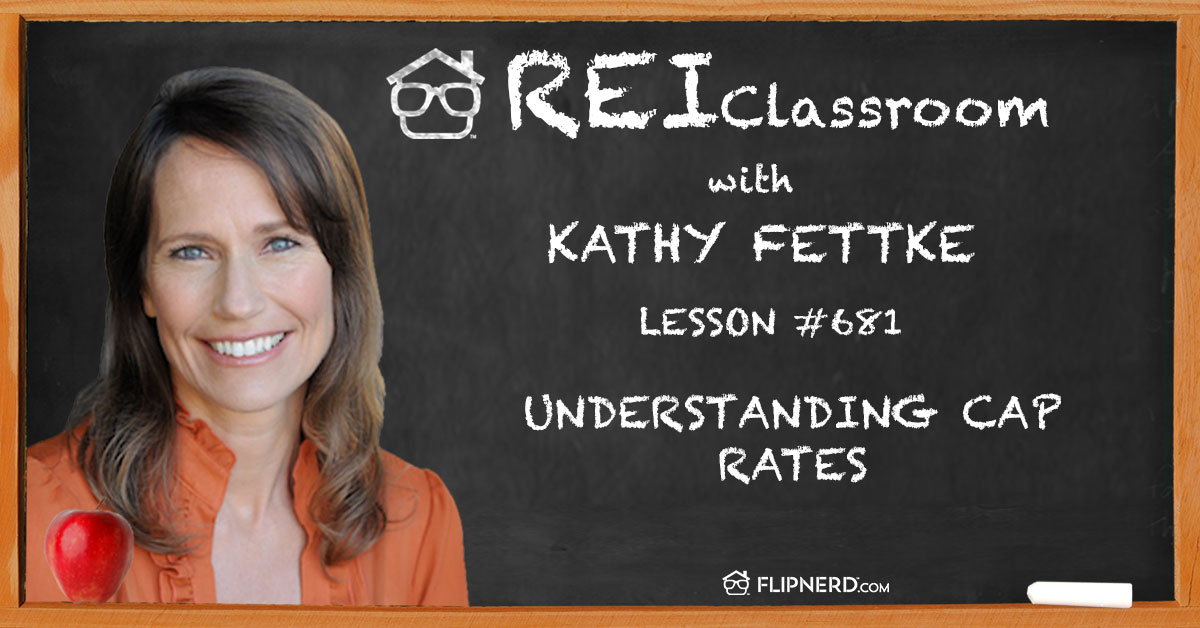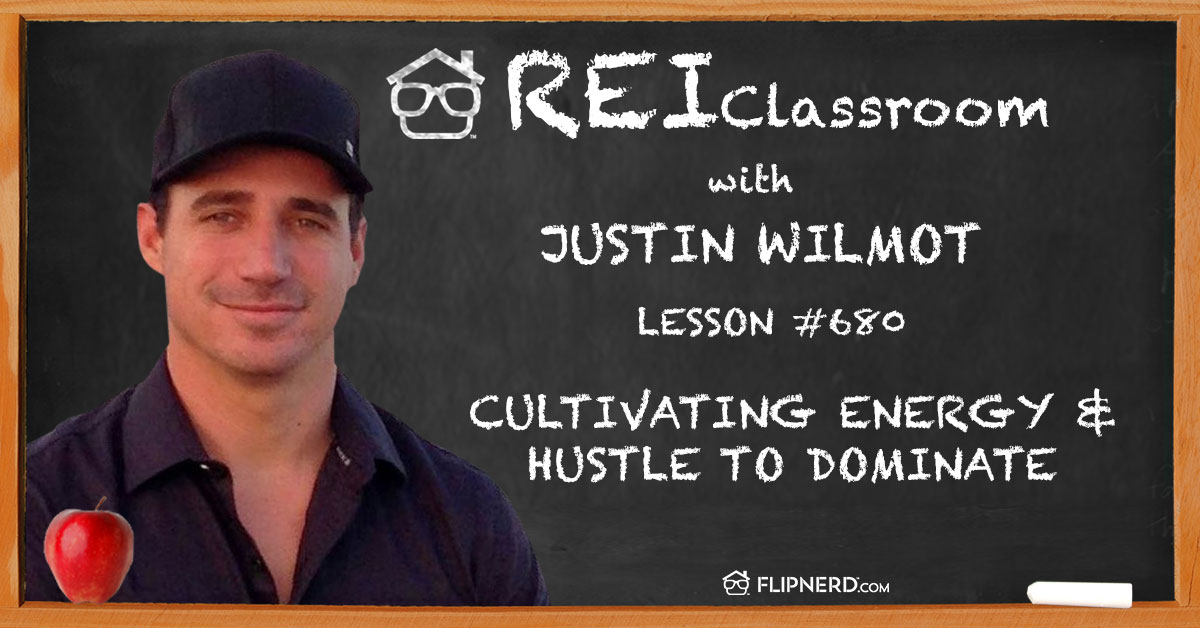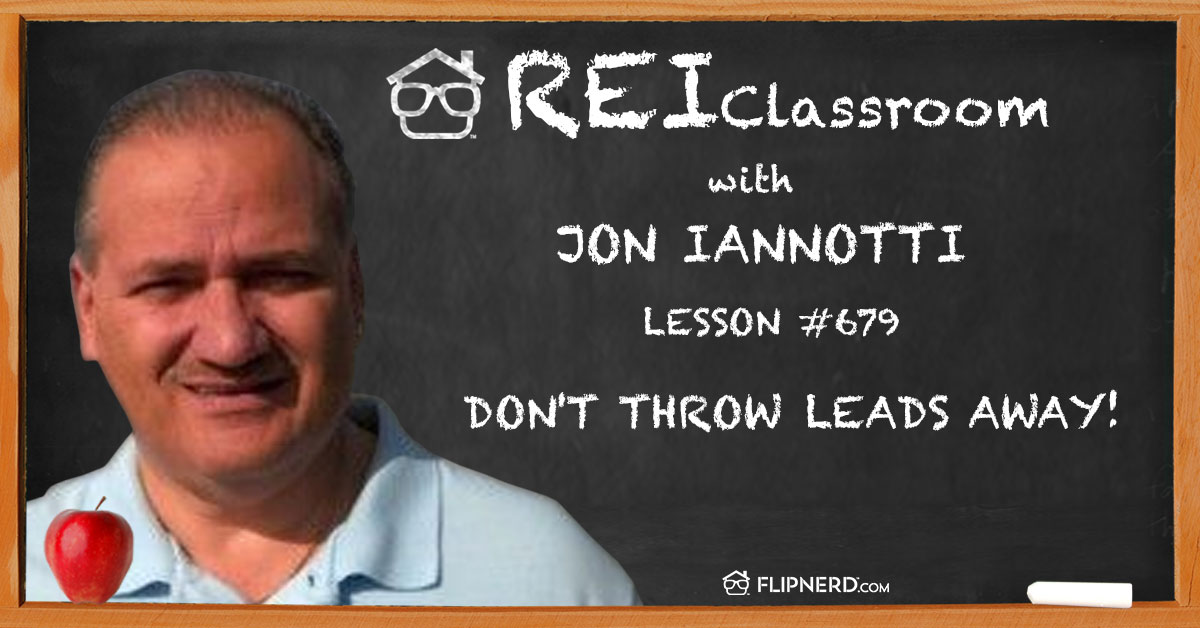Today’s REI Classroom Lesson
Gene Guarino discusses how to calculate the valuation of the real estate and the business for a residential assisted living property.
REI Classroom Summary
Determining the value of the real estate can be tricky because of the extra features that many residential assisted living properties have. From extra bathrooms and bathrooms, to not as many garage spaces, there are pros and cons when comparing other properties to it.
Listen to this REI Classroom Lesson
Real Estate Investing Classroom Show Transcripts:
Mike: Welcome back to the flipnerd.com REI Classroom, where experts from across the real estate investing industry teach you quick lessons to take your business to the next level. And now, let’s meet today’s expert host.
Gene: Hey, this is Gene, the founder of the Residential Assisted Living Academy and your host for this week’s REI Classroom. Today, we’re going to be talking about valuation of residential assisted living.
Mike: This show was sponsored by passiverental.com.
Gene: Now, the first thing with valuation is there are two parts to this, think real estate on one side and the business on the other. I was just in Las Vegas for four days, I had a great trip with my wife and when you’re in Las Vegas, there are all kinds of real estate. There’s dirt, there are buildings, but there are all kinds of businesses inside, and residential assisted living is very much the same. You have a home, which is the real estate, and it has value. So let’s talk about that first because here at REI at FlipNerd, that’s what it’s all about, it’s the real estate part.
So the home is a residential property, it’s in a residential home in a residential neighborhood. Notice I keep stressing residential because as much as you think it’s commercial, because it’s a business, it’s not. It’s residential. So the home is valued based on the comparable market analysis to other homes in the area. If the garage was converted to living space, that’s a plus and a minus because now you have extra living space, extra square footage, which is good, but you no longer have a garage, which is bad.
So there are pluses and minuses so you have to take a look at it, comparing it to all of the other real estate in that neighborhood. Now, if the home is twice the size of every other home in that neighborhood, it’s not worth twice as much. It’s going to be worth more, but not twice as much. So the additional space that is created, which is very common in residential assisted living, is not worth per square foot the exact same as every other square foot for every other home in the area. So there are going to be plusses and minuses. So make sure you really understand that, converted garage space, plus and minus. Additional space, that’s good, but it’s not worth the same on every single level.
When you take out a bathtub and you put in a shower, that’s a plus and a minus as well. When you add grab bars, plus and a minus as well. So all of those different things, when you add them up, add to the valuation. So realistically, when you have somebody come in who does an appraisal on the property, a lot of times on a residential basis, that appraiser’s going to have a hard time giving you that appraisal. As a matter of fact, I’ve had appraisers come to the home and look at it and go, “You know what, it looks like a duck and it quacks like a duck, but this duck is a little bit different.” It’s in a residential neighborhood, but it’s got a business inside. There’s a license on the wall, there are grab bars on the wall, there are different things going on and they have a bit of a hard time.
Now, when it’s an SBA loan, then it’s a little bit different. The appraiser comes in and understands that there’s a business involved, it is residential real estate and it’s a guaranteed loan by the government, so even though there’s the bank involved the government guarantee, the appraiser has a different level of experience. So I’d have to say that the appraisers that come in when there’s an SBA loan involved tend to have a little higher level of experience when it comes to this.
But the real estate is one. Now, let’s talk about the business, and in the business itself, I’m going to give you a couple of ways to value this business. First, if it were a big box, like Brookdale, Sunrise, Atrium, it’s all about the cost per bed. They’ll have a hundred beds and they’ll say it’s worth a $100,000 per bed, $200,000 per bed, but keep in mind they have an infrastructure that includes parking lots and boiler rooms and commercial kitchens and everything that goes with it. We can’t look at it the same way from a residential standpoint.
So we can look at it from a business is worth one thing and then per bed is worth something else and that may be something like the business is worth $50,000, not that it is, just giving you a number. And then per bed, depending on the revenue that is generated, the gross revenue might be worth $10,000 per bed to $25,000 per bed.
So if it’s generating $3,000 on average per bed, it might be $10,000 a bed, $50,000 for the business, $10,000 a bed, 10 beds, that’s an extra $100,000. That business is worth a $150,000. If it’s $5,000 gross revenue per bed, then that might be worth $25,000 per bed times 10 beds is $250,000 plus $50,000 for the business that’s $300,000. So that’s a big range from $150,000 to $300,000, but if I look at it from the proper approach, and that’s the way I look at it, it’s all about the cash flow.
If I’ve got $50,000 a month coming in and my expenses are $30,000 a month going out, I’ve got $20,000 a month of net income. That’s $20,000 a month, that’s $240,000 a year, each year $240,000 in profit. If I have a multiple of two, that would be $480,000. That would be one way to value that business. I could go one times that multiple, two, three times, but this is not a technology company. It’s not going to be worth 10 times or 100 times that.
Unfortunately, a lot of people do not understand this business the way I do will value the business on something like five times or 10 times the cash flow of the business. And unfortunately, if they really don’t understand it, they’re going to do it on the gross income and not the net income and then the numbers are really skewed. You see, you really need to know this business like I do on a residential basis. And frankly, there are just not a lot of people out there that do it. At the Residential Assisted Living Academy, this is all I do. It’s what I teach, it’s what I know. I do this business myself. That’s why people call me to ask me what do I think and how do I do it.
So I’m just going to say to you there are two parts on the valuation. One is the real estate, pretty cut and dry. What is it worth compared to what other properties are worth? Just compare it. There are plusses and minuses, depending on what’s been done to the property. Just because you made it twice as big doesn’t mean it’s worth twice as much.
On the business side, we can go per bed plus something for the business, but I would rather you do it on a profitable basis, how much is the profit, let’s have a multiple, and is it worth one times the annual profit or two, maybe three. If I’m buying it, let’s call it one. If I’m selling it, let’s call it three. But it’s not going to be worth four or five. It’s not a tech company.
So there it is, valuation of residential assisted living. If you’d like to learn more, and I bet you do, this is a great industry where you can learn how to make money and help other people do good and do well, come on over to our website at ralacademy.com. That’s ralacademy.com. This is Gene for the REI Classroom at the FlipNerd. I’d love to teach you more, come back for learning more. Thank you.
Mike: passiverental.com is your source for turnkey done-for-you rental properties. If you’d like to be an investor and not a landlord, please visit passiverental.com to learn how to purchase cash flowing, professionally managed rental properties in the hottest rental markets across the country. We can also help connect you with financing for your next property. Invest the easy way today and get started by visiting passiverental.com.
Please note, the views and the opinions expressed by the individuals in this program do not necessarily reflect those of flipnerd.com or any of its partners, advertisers or affiliates. Please consult professionals before making any investment or tax decisions, as real estate investing can be risky.
Are you a member yet of flipnerd.com, the hottest real estate investing social community online? If not, you can join for free in less than 30 seconds and get access to hundreds of off-market deals, vendors in your market to help you in your business, and you can start networking with thousands of other investors just like you. Get your free account now at flipnerd.com.
Please check out the FlipNerd family of real estate investing shows, where you can access hundreds of expert interviews, quick tips and lessons from leaders across the real estate investing industry. They’re available at flipnerd.com/shows or simple search for FlipNerd in the iTunes store.
Gene: Hey, this is Gene, the founder of the Residential Assisted Living Academy and your host for this week’s REI Classroom. Today, we’re going to be talking about valuation of residential assisted living.
Mike: This show was sponsored by passiverental.com.
Gene: Now, the first thing with valuation is there are two parts to this, think real estate on one side and the business on the other. I was just in Las Vegas for four days, I had a great trip with my wife and when you’re in Las Vegas, there are all kinds of real estate. There’s dirt, there are buildings, but there are all kinds of businesses inside, and residential assisted living is very much the same. You have a home, which is the real estate, and it has value. So let’s talk about that first because here at REI at FlipNerd, that’s what it’s all about, it’s the real estate part.
So the home is a residential property, it’s in a residential home in a residential neighborhood. Notice I keep stressing residential because as much as you think it’s commercial, because it’s a business, it’s not. It’s residential. So the home is valued based on the comparable market analysis to other homes in the area. If the garage was converted to living space, that’s a plus and a minus because now you have extra living space, extra square footage, which is good, but you no longer have a garage, which is bad.
So there are pluses and minuses so you have to take a look at it, comparing it to all of the other real estate in that neighborhood. Now, if the home is twice the size of every other home in that neighborhood, it’s not worth twice as much. It’s going to be worth more, but not twice as much. So the additional space that is created, which is very common in residential assisted living, is not worth per square foot the exact same as every other square foot for every other home in the area. So there are going to be plusses and minuses. So make sure you really understand that, converted garage space, plus and minus. Additional space, that’s good, but it’s not worth the same on every single level.
When you take out a bathtub and you put in a shower, that’s a plus and a minus as well. When you add grab bars, plus and a minus as well. So all of those different things, when you add them up, add to the valuation. So realistically, when you have somebody come in who does an appraisal on the property, a lot of times on a residential basis, that appraiser’s going to have a hard time giving you that appraisal. As a matter of fact, I’ve had appraisers come to the home and look at it and go, “You know what, it looks like a duck and it quacks like a duck, but this duck is a little bit different.” It’s in a residential neighborhood, but it’s got a business inside. There’s a license on the wall, there are grab bars on the wall, there are different things going on and they have a bit of a hard time.
Now, when it’s an SBA loan, then it’s a little bit different. The appraiser comes in and understands that there’s a business involved, it is residential real estate and it’s a guaranteed loan by the government, so even though there’s the bank involved the government guarantee, the appraiser has a different level of experience. So I’d have to say that the appraisers that come in when there’s an SBA loan involved tend to have a little higher level of experience when it comes to this.
But the real estate is one. Now, let’s talk about the business, and in the business itself, I’m going to give you a couple of ways to value this business. First, if it were a big box, like Brookdale, Sunrise, Atrium, it’s all about the cost per bed. They’ll have a hundred beds and they’ll say it’s worth a $100,000 per bed, $200,000 per bed, but keep in mind they have an infrastructure that includes parking lots and boiler rooms and commercial kitchens and everything that goes with it. We can’t look at it the same way from a residential standpoint.
So we can look at it from a business is worth one thing and then per bed is worth something else and that may be something like the business is worth $50,000, not that it is, just giving you a number. And then per bed, depending on the revenue that is generated, the gross revenue might be worth $10,000 per bed to $25,000 per bed.
So if it’s generating $3,000 on average per bed, it might be $10,000 a bed, $50,000 for the business, $10,000 a bed, 10 beds, that’s an extra $100,000. That business is worth a $150,000. If it’s $5,000 gross revenue per bed, then that might be worth $25,000 per bed times 10 beds is $250,000 plus $50,000 for the business that’s $300,000. So that’s a big range from $150,000 to $300,000, but if I look at it from the proper approach, and that’s the way I look at it, it’s all about the cash flow.
If I’ve got $50,000 a month coming in and my expenses are $30,000 a month going out, I’ve got $20,000 a month of net income. That’s $20,000 a month, that’s $240,000 a year, each year $240,000 in profit. If I have a multiple of two, that would be $480,000. That would be one way to value that business. I could go one times that multiple, two, three times, but this is not a technology company. It’s not going to be worth 10 times or 100 times that.
Unfortunately, a lot of people do not understand this business the way I do will value the business on something like five times or 10 times the cash flow of the business. And unfortunately, if they really don’t understand it, they’re going to do it on the gross income and not the net income and then the numbers are really skewed. You see, you really need to know this business like I do on a residential basis. And frankly, there are just not a lot of people out there that do it. At the Residential Assisted Living Academy, this is all I do. It’s what I teach, it’s what I know. I do this business myself. That’s why people call me to ask me what do I think and how do I do it.
So I’m just going to say to you there are two parts on the valuation. One is the real estate, pretty cut and dry. What is it worth compared to what other properties are worth? Just compare it. There are plusses and minuses, depending on what’s been done to the property. Just because you made it twice as big doesn’t mean it’s worth twice as much.
On the business side, we can go per bed plus something for the business, but I would rather you do it on a profitable basis, how much is the profit, let’s have a multiple, and is it worth one times the annual profit or two, maybe three. If I’m buying it, let’s call it one. If I’m selling it, let’s call it three. But it’s not going to be worth four or five. It’s not a tech company.
So there it is, valuation of residential assisted living. If you’d like to learn more, and I bet you do, this is a great industry where you can learn how to make money and help other people do good and do well, come on over to our website at ralacademy.com. That’s ralacademy.com. This is Gene for the REI Classroom at the FlipNerd. I’d love to teach you more, come back for learning more. Thank you.
Mike: passiverental.com is your source for turnkey done-for-you rental properties. If you’d like to be an investor and not a landlord, please visit passiverental.com to learn how to purchase cash flowing, professionally managed rental properties in the hottest rental markets across the country. We can also help connect you with financing for your next property. Invest the easy way today and get started by visiting passiverental.com.
Please note, the views and the opinions expressed by the individuals in this program do not necessarily reflect those of flipnerd.com or any of its partners, advertisers or affiliates. Please consult professionals before making any investment or tax decisions, as real estate investing can be risky.
Are you a member yet of flipnerd.com, the hottest real estate investing social community online? If not, you can join for free in less than 30 seconds and get access to hundreds of off-market deals, vendors in your market to help you in your business, and you can start networking with thousands of other investors just like you. Get your free account now at flipnerd.com.
Please check out the FlipNerd family of real estate investing shows, where you can access hundreds of expert interviews, quick tips and lessons from leaders across the real estate investing industry. They’re available at flipnerd.com/shows or simple search for FlipNerd in the iTunes store.










